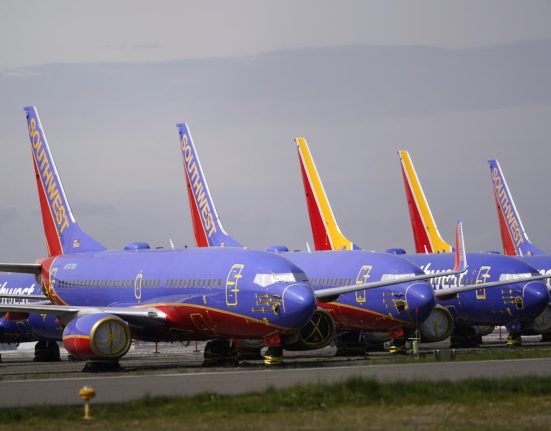Now Boeing investors, whether they like it or not, have to prepare themselves for Monday’s trading session with as much detail—and context—as possible.
On Friday, a
flight was found to be missing an external panel when it landed in Oregon. The plane involved was a 25-year-old 737 NG, or Next Generation, model. Boeing’s 737 MAX jets are newer models—and have essentially replaced the NG jets in the company’s product lineup.
No emergency was declared and the plane is being inspected and repaired, according to United.
Still, every incident involving a Boeing plane is investor-level news after Jan. 5, when a 737 MAX 9’s emergency door plug blew out during an
flight.
Advertisement – Scroll to Continue
Barron’s looked at aviation incidents recorded in the National Transportation Safety Board, or NTSB, database which involved Boeing and
jets over the past 12 months. There were 53 incidents involving U.S.-registered jets operated by at least a dozen airlines during this time period, including almost a dozen plane models.
Boeing, Airbus, and the Federal Aviation Administration didn’t immediately respond to Barron’s request for comment on our data.
Incidents can be many things. They can happen on the tarmac while a plane is taxiing, ascending, flying midair, or landing. They can also happen anywhere in the world; the NTSB database is global.
Advertisement – Scroll to Continue
Barron’s found 37 incidents involving Boeing jets and 16 involving Airbus jets. It makes sense for Boeing to have more incidents: major U.S. airlines have some 3,400 Boeing jets in their fleets, double the roughly 1,700 Airbus planes.
The 53 incidents work out to just over four incidents a month for a U.S.-registered commercial airline—which means about 0.1% of the U.S. fleet is impacted.
The data show that older planes have more issues than younger planes. Over the past 12 months, the incident rate for Boeing planes between 20 and 30 years old is about two a month. Meanwhile, the incident rate for planes up to 10 years old is about one a month.
The incident rate for newer Airbus jets looks the same—about one a month. That means newer Boeing jets slightly outperform Airbus jets, given the latter’s smaller fleet. Still, the numbers are small.
Airbus jets between 20 and 30 years old have six incidents recorded in the NTSB database over the past 12 months. That’s impressive—but small numbers make it difficult to declare something definitive.
Advertisement – Scroll to Continue
The big takeaways: overall incident rates are low, incidents appear to happen to older planes at a higher rate than newer jets, and numbers for Boeing and Airbus look similar—on the surface.
The data also show that 47—or 89%—of the incidents involved planes more than three years old. Airlines have been operating almost all of the jets for years. The “average plane” in the data covering the past 12 months was delivered in 2004, making it roughly 20 years old.
Investors must consider safety data because Boeing has legitimate safety, quality, and production issues. Boeing stock was north of $440 a share before the second tragic 737 MAX crash in 2019.
This year, Boeing stock was at $249 a share before the door plug failure in January. Boeing shares closed at $182.53 on Friday, off 30% in 2024, making it the second worst-performing stock in the
this year. (
Advertisement – Scroll to Continue
stock is the worst.)
MAX issues over the past few years make all Boeing-related aviation incidents news—for now. Investors simply must learn how to contextualize each incident and decide whether they represent production, design, maintenance issues—or human error.
The issue involving the United flight on Friday appears to fall in the maintenance category. The FAA and NTSB should eventually weigh in on the root causes of the problem.
Write to Al Root at allen.root@dowjones.com







